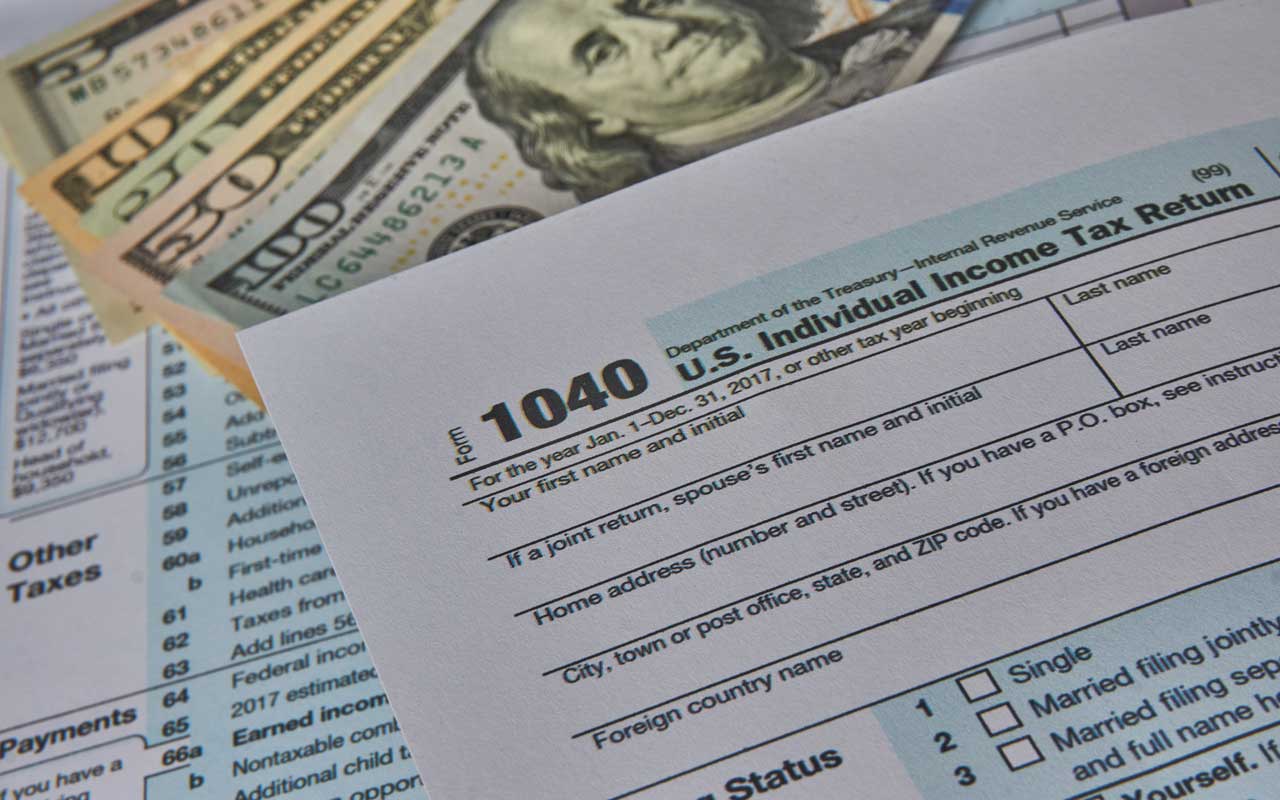Retirees, Year-End Moves to Trim Your Tax Tab
The coming tax-filing season will be full of twists and turns.


The coming tax-filing season will be full of twists and turns. New tax forms should be in place. Old, familiar tax breaks are gone, replaced by new breaks and new tax-saving opportunities. And the new, lower tax rates are in full effect. If the 2019 filing season were a reality show, no doubt it would be the most dramatic season yet.
But with 2018 quickly drawing to a close, now is the time to look for last-minute tax-saving moves and tamp down your tax tab for the year. With tax reform in place, this year’s tax-trimming moves may be quite different from moves you made in the past. “One of the old tried-and-true methods was to bunch deductions,” says Bill Smith, managing director for CBIZ MHM’s national tax office. You may “still want to accelerate deductions, but not many are left.”
Here are some last-minute moves to consider as you try to outwit Uncle Sam and hold on to as much of your cash as you can.

Crunch the Numbers
To assess where you stand with Uncle Sam, estimate your 2018 tax burden. Tally up your taxable income streams, and estimate the amount of taxable income you expect for the rest of the year. Up to 85% of Social Security benefits are taxable, for instance. Retirement account distributions and income from pensions and annuities are generally taxable, too. (If your income is hefty, consider whether any of it can be pushed off to a future tax year.)
Then consider what tax breaks you expect to use and how they affect your income tax bracket and estimated tax bill.
Run the numbers using the standard deduction and by itemizing deductions to see which route saves you more money. Your most effective tax-saving moves may depend on the route you plan to take. The hurdle is higher to itemize this year because the standard deduction nearly doubled, to $12,000 for single filers and $24,000 for married couples filing jointly. Taxpayers age 65 and older get a higher deduction—joint filers add $1,300 per spouse and single filers add $1,600.
The closer it is to the end of the year, the more precise your estimate will be. But some tax-saving moves may take a little time to execute, so don’t procrastinate on projecting your tax burden.
Next, estimate any withholding you’ve requested through year-end, and add it to the tax you’ve already paid for 2018. Depending on how that figure matches up to your expected tax burden, you may need to adjust either your withholding or estimated tax payments. By year-end, your remaining tax burden should be less than $1,000 to avoid an unnecessary underpayment penalty.

Identify Your Tax Bracket
Here are the new 2018 marginal tax rates and corresponding taxable income ranges for married taxpayers filing jointly:
- 10%: $0-$19,050
- 12%: $19,051-$77,400
- 22%: $77,401-$165,000
- 24%: $165,001-$315,000
- 32%: $315,001-$400,000
- 35%: $400,001-$600,000
- 37%: Over $600,000
And here are the new 2018 tax brackets for single taxpayers:
- 10%: $0-$9,525
- 12%: $9,526-$38,700
- 22%: $38,701-$82,500
- 24%: $82,501-$157,500
- 32%: $$157,501-$200,000
- 35%: $200,001-$500,000
- 37%: Over $500,000

Turbocharge Your Retirement Savings
Maxing out savings can lower your taxable income. If you’re still working, stash as much as you can in tax-advantaged retirement accounts. Those who are 50 and older can put up to $6,500 into a traditional IRA for 2018. A working spouse can contribute the same amount to a spousal IRA for a nonworking spouse, as long as the worker’s earnings cover the total contributions. (Workers age 70½ or older can’t contribute to a traditional IRA, but they can still stash money in a Roth IRA.)
If you are contributing to an IRA for a tax deduction, you’ll need to determine how much of your contributions are deductible. But the good news is that deductible contributions can trim your tax bill whether you itemize or not. And if you need a super last-minute tax saver, you can contribute to an IRA for 2018 up until the tax-filing deadline, which is April 15, 2019.
Workers can stash much more in a traditional 401(k)—up to $24,500 for those 50 or older—but contributions must be made by the end of the year. The more a worker can put in, the lower his or her taxable income will be. There’s no age cap, so older workers can choose to max out their contribution.
If you contribute to a health savings account, maxing out contributions to that tax-advantaged account can lower your taxable income. In 2018, taxpayers can make tax-deductible HSA contributions of up to $3,450 for single coverage and up to $6,900 for family coverage.

Take the New Pass-Through Deduction
Some taxpayers may be able to take advantage of the new 20% tax break on qualified business income from “pass-through entities,” which include limited liability companies and sole proprietorships. If you decided to start your own business in retirement, for instance, you might qualify. Dividends from real estate investment trusts also are eligible for the break.
The break is pretty simple to take if your income is less than $157,500 for single filers or $315,000 for joint filers. Above those thresholds, the break phases out and some restrictions apply. On the IRS’s draft of the new Form 1040, the break appears after adjusted gross income and after the line for standard or itemized deductions—so you can qualify for the break regardless of whether you itemize or not, says Mark Luscombe, principal analyst for Wolters Kluwer’s tax and accounting business.

Give to Charity (Part 1)
If you are charitably inclined but also like to maximize your tax savings, it’s critical to figure out whether you will itemize or not, particularly if you are 70½ or older. Those who are subject to required minimum distributions have a special tax break available—the qualified charitable distribution. This move allows those 70½ or older to transfer up to $100,000 directly to charity from their IRA each year. If the QCD is distributed before your RMD is satisfied for the year, it can also count toward your RMD.
The bonus: A QCD is not included in your adjusted gross income, and it can help lower your taxable income even if you are taking the standard deduction.
But itemizers can benefit from the QCD move, too. “Since [the QCD] doesn’t show up in income, it doesn’t show up in other areas affected by AGI,” says Keith Bernhardt, vice president of retirement income at Fidelity Investments. That can help you qualify for breaks that are dependent on AGI, such as the medical expenses deduction. A lower AGI could help mitigate tax on Social Security benefits, too, since AGI is part of that calculation.
Don’t wait until the end of the year to do the QCD, warns Bernhardt. He advises making the move no later than the first week of December. It takes some time for the money to go from the IRA to the charity, particularly if an investment needs to be sold for cash, and the charity must receive the money by year-end for the QCD to count, he says. Note: A QCD cannot be put into a donor-advised fund.

Give to Charity (Part 2)
If you have almost enough deductions to itemize, though, you might consider stashing some money in a donor-advised fund to help “bunch” charitable deductions. Bunching several years’ worth of charitable gifts into one large donation to a donor-advised fund allows you to get the tax break now and itemize in one year, while taking the standard deduction in other years. You can direct the money to specific causes from the donor-advised fund whenever you like.
Itemizers should also consider donating appreciated stock to charity. This move lets you receive a deduction based on the stock’s current market value and avoid capital-gains taxes on the appreciation, says Eric Bronnenkant, the head of tax at Betterment for Business.

Deduct Medical Expenses
Many deductions have been eliminated or severely restricted in 2018, making itemizing less likely for many taxpayers. For instance, you can no longer deduct state and local taxes that exceed $10,000 or miscellaneous expenses.
But one break that didn’t disappear and actually got sweeter under the new law is the medical expenses deduction. For 2018, itemizers can deduct medical expenses that exceed 7.5% of AGI. That threshold goes up to 10% in 2019, so consider whether you might have any elective medical procedures that you can accelerate into 2018, says Benjamin Sullivan, a certified financial planner in the Austin, Texas, office of Palisades Hudson Financial Group. See IRS Publication 502 for deductible medical expenses.

Harvest Capital Losses
In an extended bull market, it may be a little harder to find some investing duds. But if you have some picks that haven’t succeeded, you can sell those investments and use the losses to offset capital gains and up to $3,000 of ordinary income. Even if you don’t use all your losses in 2018, you can still benefit. “Losses can be carried forward indefinitely,” says Jeff Morrison, senior wealth strategist at PNC Wealth Management.
But, Morrison warns, “be mindful of wash-sale rules.” If you sell shares at a loss, watch your timing if you want to reinvest in that stock. If you buy the stock back within 30 days, the wash-sale rules kick in, and the deductible loss will be disallowed.

Grab the 0% Rate
While you can benefit tax-wise from selling investments at a loss, it also can be beneficial to sell investments at a profit if you qualify for the 0% capital-gains tax rate. For 2018, the 0% rate applies to single filers with income up to $38,600 and joint filers with income up to $77,200. If your income is below that level, consider selling stock that you’ve held for more than one year to top out the threshold and grab the 0% rate on capital gains. (If you sell shares you’ve held for less than 12 months, any gains will be taxed as ordinary income.) If you sell shares at a profit, you can repurchase that stock immediately—the wash-sale rules apply only to losses.

Snag Home-Related Breaks
If you are itemizing in 2018, you may still be able to take advantage of home-related tax breaks—though some have been restricted under tax reform. You can still deduct interest on up to $1 million of older mortgage debt, for example, but the debt limit is $750,000 for mortgages taken after December 15, 2017.
- Interest from home-equity debt is no longer fully deductible. Now only the portion attributable to home improvements or a home purchase can be written off. “If you take out a $100,000 loan to put on an addition to your home, that interest is deductible,” says Sullivan.
State and local tax deductions are limited to $10,000, whereas previously there was no limit. And that $10,000 cap applies to both single and joint filers. “It’s a new marriage penalty,” says Luscombe.
Regardless of how they take deductions, taxpayers selling a home in 2018 may qualify for the home-sale-profit exclusion, which survived intact under tax reform. If you owned and occupied the home for at least two of the past five years, you can exclude up to $250,000 in profit as a single filer and up to $500,000 as joint filers.

Tap a Roth for Emergencies
Sometimes unexpected expenses pop up—maybe you need a new roof or a new car that wasn’t in your budget for the year. If you’re in a cash crunch, consider tapping tax-free money from a Roth account.
Using tax-free Roth IRA money to help fill an income gap won’t spike your taxable income for the year. Unlike traditional IRA distributions, Roth distributions won’t have any effect on the taxation of your Social Security benefits or income-related Medicare premium surcharges.

Try the RMD Solution
The easy way to avoid underpaying your tax bill and incurring subsequent penalties is to have money withheld for taxes from your required minimum distributions. You can do so even late in the year and have it cover the tax for other income.
As year-end approaches, ask your IRA custodian to withhold enough money from your IRA distribution to cover your estimated tax burden. Then take the RMD. Voilà! Because the tax money is withheld, it’s considered to have been paid evenly throughout the year—even if you take the distribution in December.
Everyone wins: More of your money grows in the IRA for a longer time period, and Uncle Sam gets his cash without charging you any late-payment penalties. (Keep in mind that the U.S. tax system is “pay as you go”—if money isn’t withheld for taxes, you need to pay tax on income as it comes in.)
As long as the tax withheld is at least 90% of this year’s tax bill, or you owe less than $1,000, you’ll be off the hook for underpayment penalties. Or to ensure you avoid underpayment penalties, particularly if you’re concerned about the accuracy of your 2018 projection, request enough withholding to equal 100% (or 110% if your income is more than $150,000) of last year’s tax bill.
With all the changes created by tax reform, such as the loss of the personal exemption and the restricted state and local taxes deduction, it’s critical to check that your withholding or estimated tax payments are sufficient. The IRS has an online tool that can help you avoid underpaying tax for 2018.
Get Kiplinger Today newsletter — free
Profit and prosper with the best of Kiplinger's advice on investing, taxes, retirement, personal finance and much more. Delivered daily. Enter your email in the box and click Sign Me Up.

-
 Stock Market Today: Stocks Gain on Tech, Auto Tariff Talk
Stock Market Today: Stocks Gain on Tech, Auto Tariff TalkThe Trump administration said late Friday that it will temporarily halt tariffs on some Chinese tech imports.
By Karee Venema
-
 Sam's Club Plans Aggressive Expansion: Discover Its New Locations
Sam's Club Plans Aggressive Expansion: Discover Its New LocationsSam's Club expansion plans will open up to 15 new stores each year. Learn where they plan to open in 2025.
By Sean Jackson
-
 What to Do With Your Tax Refund: 6 Ways to Bring Growth
What to Do With Your Tax Refund: 6 Ways to Bring GrowthUse your 2024 tax refund to boost short-term or long-term financial goals by putting it in one of these six places.
By Rachael Green
-
 What Does Medicare Not Cover? Eight Things You Should Know
What Does Medicare Not Cover? Eight Things You Should KnowHealthy Living on a Budget Medicare Part A and Part B leave gaps in your healthcare coverage. But Medicare Advantage has problems, too.
By Donna LeValley
-
 12 Great Places to Retire in the Midwest
12 Great Places to Retire in the MidwestPlaces to live Here are our retirement picks in the 12 midwestern states.
By Stacy Rapacon
-
 10 Cheapest Small Towns to Live In
10 Cheapest Small Towns to Live InThe cheapest small towns might not be for everyone, but their charms can make them the best places to live for plenty of folks.
By Dan Burrows
-
 15 Reasons You'll Regret an RV in Retirement
15 Reasons You'll Regret an RV in RetirementMaking Your Money Last Here's why you might regret an RV in retirement. RV-savvy retirees talk about the downsides of spending retirement in a motorhome, travel trailer, fifth wheel or other recreational vehicle.
By Bob Niedt
-
 The Cheapest Places To Retire in the US
The Cheapest Places To Retire in the USWhen you're trying to balance a fixed income with an enjoyable retirement, cost of living is a crucial factor to consider.
By Stacy Rapacon
-
 The Six Best Places to Retire in New England
The Six Best Places to Retire in New Englandplaces to live Thinking about a move to New England for retirement? Here are the best places to land for quality of life, affordability and other criteria.
By Stacy Rapacon
-
 13 Smart Estate Planning Moves
13 Smart Estate Planning Movesretirement Follow this estate planning checklist for you (and your heirs) to hold on to more of your hard-earned money.
By Janet Kidd Stewart
